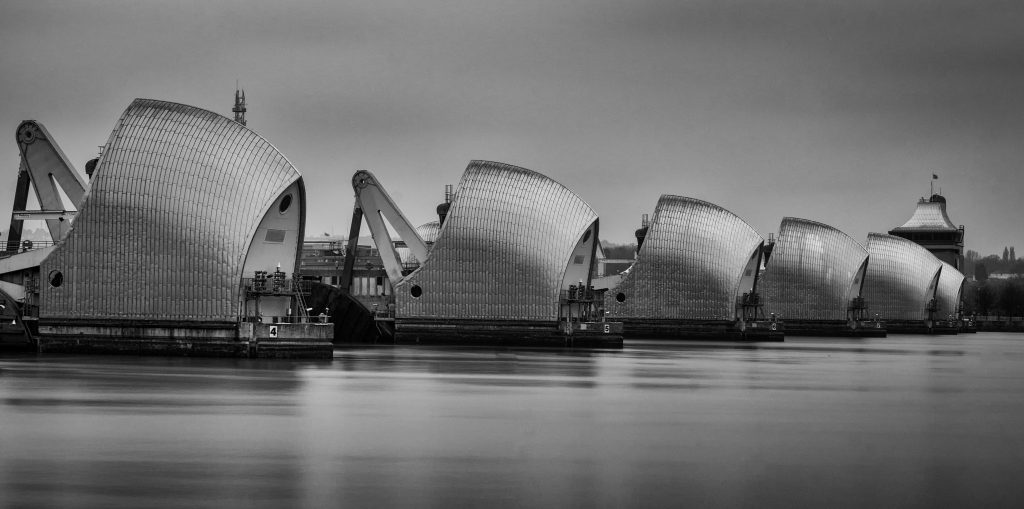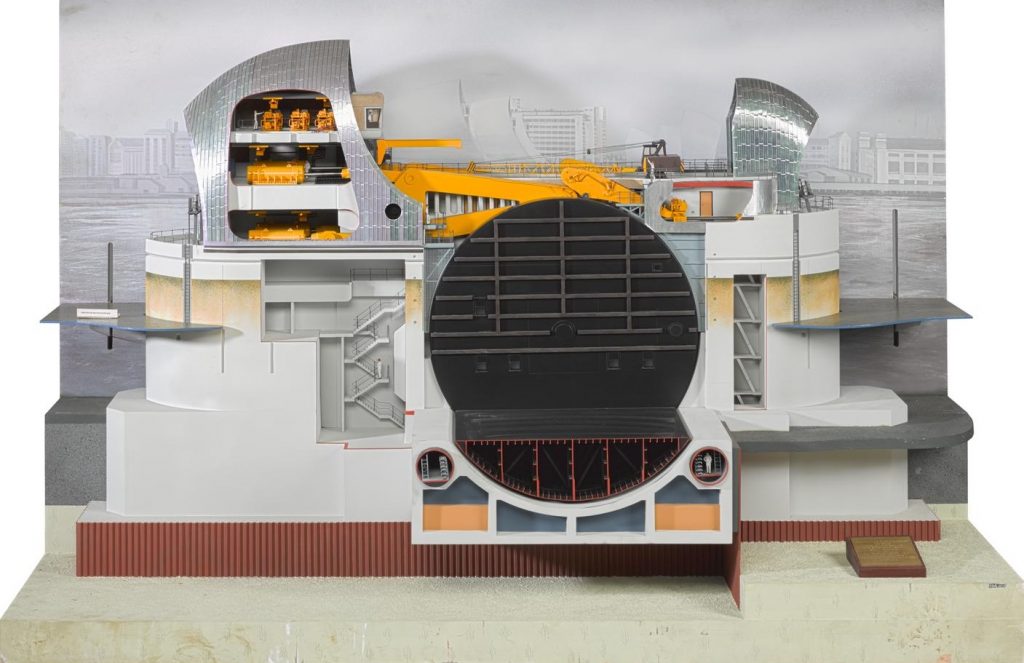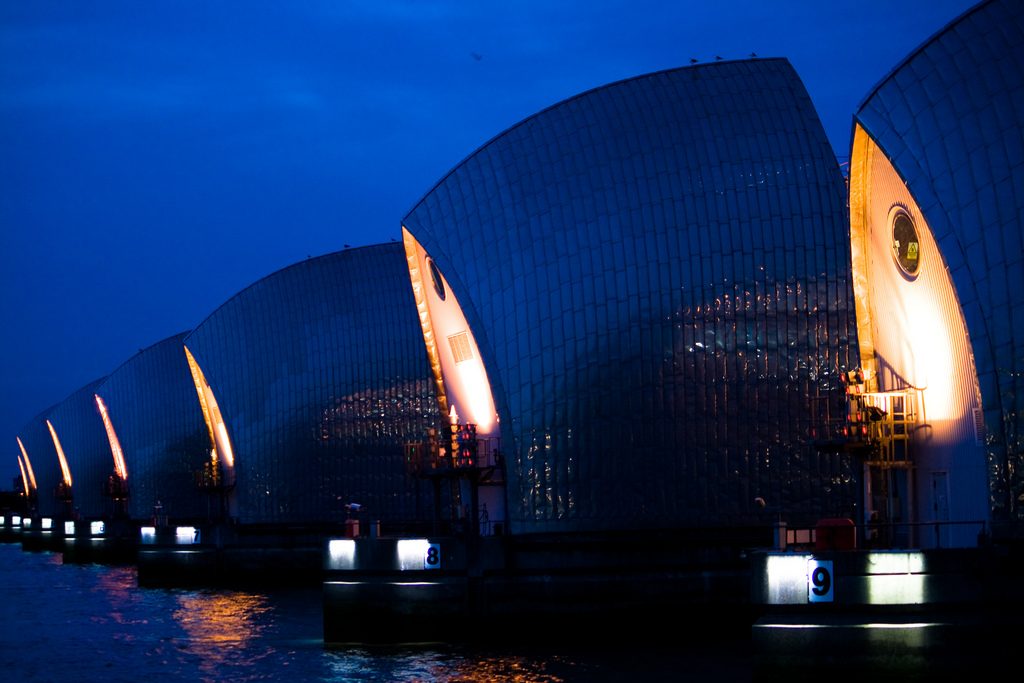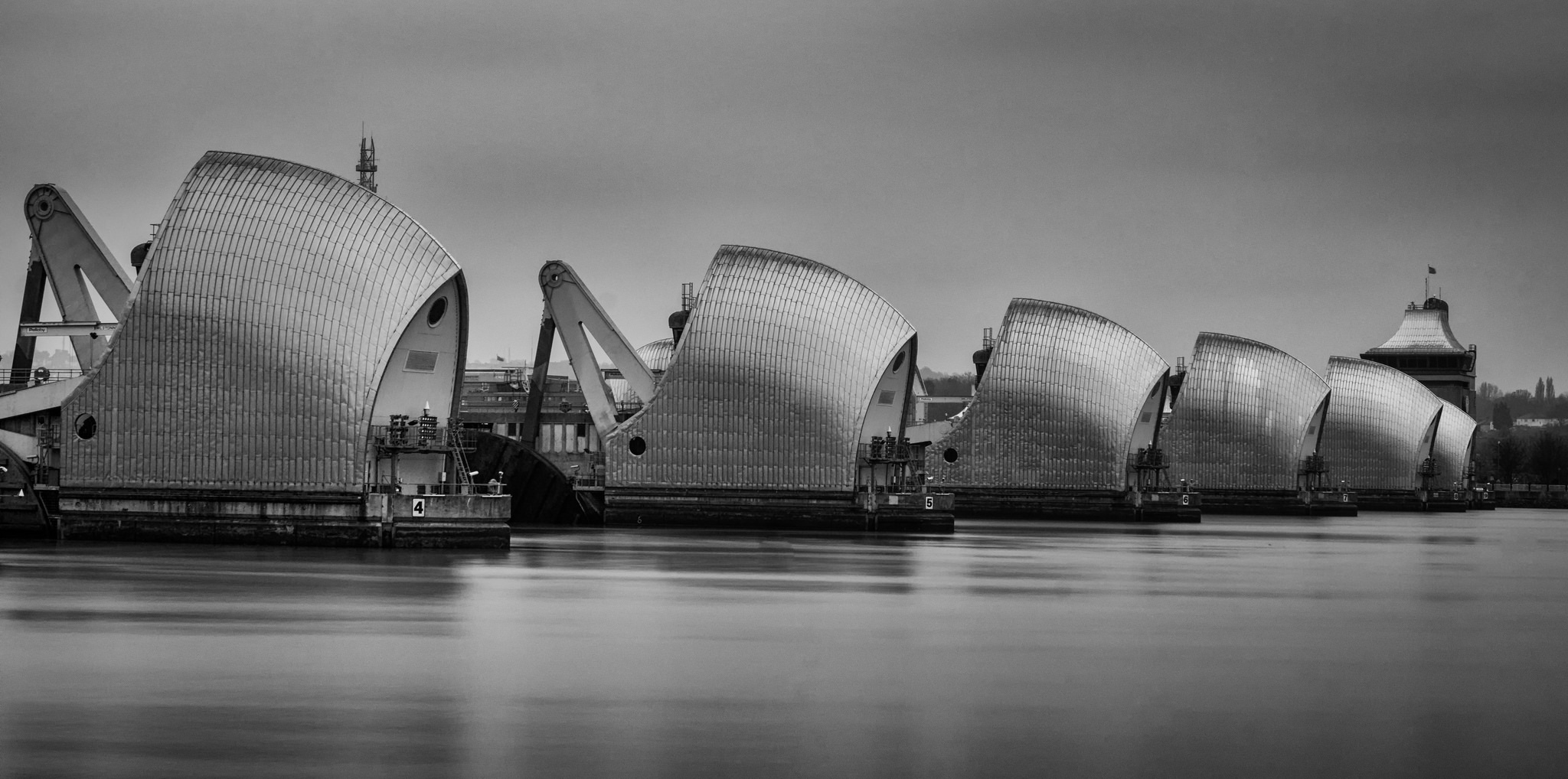Today marks thirty-three years since the official opening by the Queen of the Thames Barrier. Curator of Technology and Engineering Elizabeth Bruton considers how this distinctive London landmark is an outcome of mathematical modelling.

On this day, 8 May, in 1984, the £535-million Thames Barrier was officially opened by Her Majesty Queen Elizabeth II and the Duke of Edinburgh. Construction of the impressive and unique flood control structure, which spans 520 metres across the river Thames at Woolwich Reach in East London, began a decade earlier in 1974.
The Thames Barrier is also one of London’s most striking and famous landmarks with its distinctive ten stainless steel piers first became operational in October 1982, 18 months before the official opening, and was first used in February 1983.
As explored in our exciting Mathematics Gallery, the architecture and design of the Thames Barrier was produced using elaborate mathematical modelling with this practical application of mathematics saving London from multiple tidal floods.

This 1:50 scale model on display in the Mathematics gallery (shown above) was given to the Science Museum around the time of the official opening in 1984 shows the innovative and futuristic design and internal structure and workings of one of one of the ten stainless steel piers with gates which can be raised into position across the Thames to protect from flooding and are also raised monthly for testing. These working scale models – although not shown working while on display – provide a unique insight into the workings of the Thames Barrier and the tidal flow of the Thames estuary. Previously, engineering scale models (of which we have many fine examples in the Science Museum collections) have been used to provide a model for testing and understanding engineering, technology, and the infrastructure around us and how and whether they would work.
When raised, the main gates stand as high as a five-storey building and as wide as the opening of Tower Bridge. Each main gate weighs 3,300 tonnes. The barrier and gates were designed to be bomb-proof and failure-proof and, in the event of the failure of the National Grid, three backup generators could keep the barrier in operation for a month.
The origins of the Thames Barrier lie in two severe flooding events which severely impacted London and the rest of Britain in the early- and mid-twentieth century. In 1928, the Thames Flood killed 14 people and caused thousands of people to be made homeless. In early 1953, the North Sea Flood caused by a heavy storm led to severe flooding in the Netherlands, Belgium, England and Scotland with over 300 people killed and an estimated £50 million of damage (approximately £5 billion in today’s money) in Britain alone.
This fatal and severe storm and flooding led to a complete rethink of London’s flood strategy and defences which had previously consisted of building higher and stronger river walls and embankments. By the mid-1960s, a report by Sir Herman Bondi put forward a new solution which would now be realisable in part due to the changing patterns in commercial and cargo shipping use of the river Thames and the docklands: a flood barrier with movable gates built across the Thames.
The concept of the rotating gates was devised by (Reginald) Charles Draper and in 1969 he built a working model. Five years later in 1974, construction of the barrier began.

Today, the Thames Barrier protects 48 square miles of the greater London area from the severe dangers of tidal flooding, storm surges and rainfall swelling. Over a million people; over £200 billion worth of property and infrastructure; a substantial proportion of the London tube network; and many historic buildings, offices, power supplies, hospitals and schools are protected by this futuristic structure spanning the river Thames.
Without the Thames Barrier, the Houses of Parliament, the O2 arena, Tower Bridge and areas of Southwark, Beckton, West Ham, Whitechapel would all be submerged in flood water. Alternative flood prevention measures would require the Embankment to be increased in height to top of the Victorian lamp-posts along this part of the river Thames, denying people a view of the river Thames.
The Thames Barrier is the second largest flood defence barrier in the world after the Oosterscheldekering Barrier in the Netherlands, with both flood control structures being responses to the 1953 North Sea Flood. The Thames Barrier Information Centre, consisting of an exhibition featuring 10-minute video and a working scale model, as well as riverside walkways, a children’s play area and the Thames Barrier Café, is open to the general public with more information available here.
2 comments on “The Thames Barrier: A guardian of the river and a product of mathematics”
Comments are closed.

Hi Liz
I was very disappointed not to manage to get to talk to you at the Cryptos meeting. I decided to google you and quickly discovered why I felt sure I knew you (though I haven’t met you) and also this very interesting blog. Living and working on a project situated on a part of the east coast seriously threatened by possible flooding and derilict sea defences I have become very interested in flood and sea defences.
May I say again what an excellent blog.
Mary Wain
Bawdsey Radar Trust